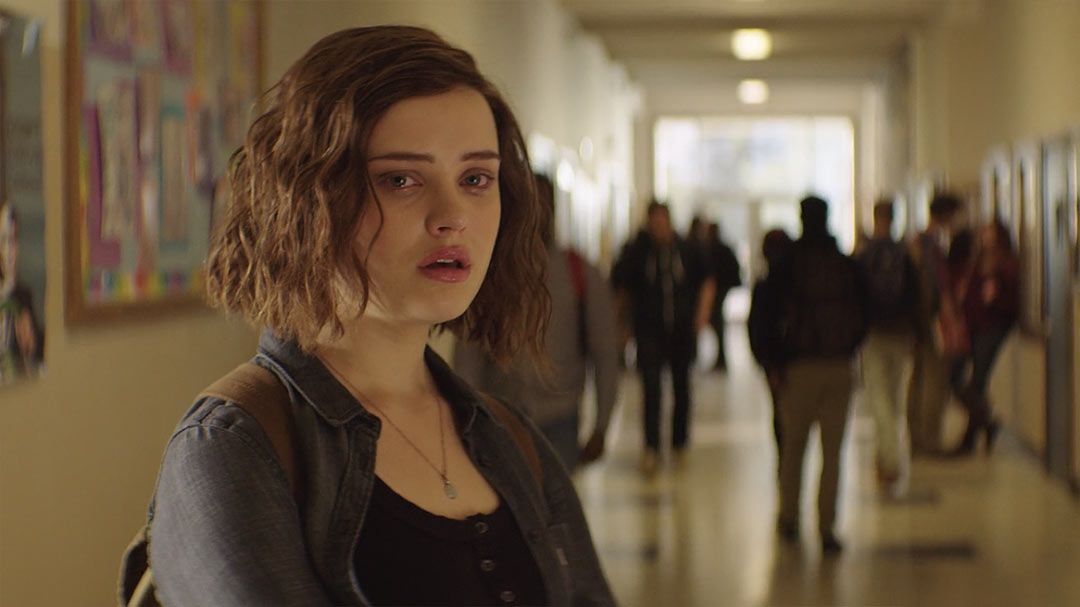By Claire Meakins, Film & Tv Critic and Subeditor
There has been a conversation surrounding the necessity of content warnings on streaming services for a long time now, often most prominently after particularly controversial releases that deal with the topic of sexual violence. Luckiest Girl Alive (2022) is one such film that, having been released earlier this month, has fully reignited the debate.
The film stars Mila Kunis as a woman struggling to come to terms with the trauma she experienced as a teenager. This trauma, which includes surviving a school shooting and being the victim of violent sexual assault, is graphically depicted on screen in scenes which are incredibly distressing. The tiny notice that the film has an 18 rating couldn’t prepare any viewer for the nature of such scenes, let alone a viewer who may be triggered by its content.

Likewise, another recent release, Blonde (2022), has been criticised for its explicit and disturbing scenes of sexual violence. The film is advertised front and centre on the Netflix homepage with no obvious suggestion of the graphic content it contains.
Indeed, one of the cover images for the film is of Ana de Armas recreating the iconic Marilyn Monroe white dress moment from The Seven Year Itch (1955): a moment heavily associated with the actress’ sex-symbol persona.
Based on this thumbnail, an unsuspecting viewer might reasonably expect Blonde’s 18 rating to be a natural consequence of a biopic sharing all the juicy details of Monroe’s infamous private life. The film’s sexual content is, however, worlds apart from any raunchy gossip column.

In both of these cases, the intention behind the films appears to be to create narratives that help survivors of sexual assault in some way, whether that be through providing comforting relatability and/or an obvious critique of our poor treatment of victims.
While these sorts of narratives may be helpful for some, it is important that viewers are able to make an informed choice as to whether this sort of intense content is for them.
Having an unexpected scene of assault is certainly not the way to handle such sensitive topics and, in fact, negates the entire ‘moral of the story’ if survivors are triggered and possibly even re-traumatised. To me, the implementation of clear and precise content warnings seems like an obvious and easy step for streaming services to take in order to make their platforms safer and more inclusive.

The main objection to the widespread use of content warnings can be summed up in the, now infamous, line: ‘life doesn’t come with trigger warnings.’ The argument is that placing these warnings provides a dangerous safety blanket that doesn’t exist in real life; this could lead to people having greater anxiety and struggling to function in a world that can’t provide them.
This line of thought, however, is often accompanied by the suggestion that those who deal with trauma are in some way weak or needy.
This last part could not be further from the truth, trauma sufferers show incredible strength in their ability to grapple with a world that may feel terrifying and overwhelming. Widespread content warnings aren’t going to make these people any more anxious in the ‘real world’, rather they won’t have to be anxious when using a streaming service- services specifically designed for entertainment, not for psychological torment.

A second objection to the use of content warnings is the fact that they may inadvertently contain spoilers, particularly for film and TV that contains dramatic plot twists. Of course, no one likes to have something spoiled, but, personally, I believe this is a case of the benefits outweighing the costs.
A small, potentially insignificant, spoiler seems justifiable if it avoids others experiencing very real and intense suffering.
What is often omitted from discussions about trigger warnings is that it doesn’t have to be an either/or situation. The streaming service Mubi provides an option to turn off content warnings for those who don’t want or need them. This opt-out approach ensures that no one will be unexpectedly triggered and that those who are opposed to having such warnings can choose to remove them.

This would be a simple thing for the streaming giants to implement, and yet they have made little effort to do so. As such, I can’t help but wonder if the media storm generated by these graphic and warning-free releases is too beneficial for them to want to include any content warnings.
The media’s spectacularising portrayal of controversial releases as being scandalous, rather than merely disturbing, means that a warning or critique can turn into a perverse advert.
While this unsettling possibility is a worrying indicator of the streaming giants’ stance on the debate between ethics vs profit, it’s not an entirely hopeless situation. Streaming services are reliant on having a consistently good reputation in order to keep subscribers locked in. If enough people voice their concerns about an issue, it exerts a great deal of pressure on them.
For instance, after the tragic school shooting in Texas this May, Netflix included a warning in the description of the first episode of the latest series of Stranger Things (2016-) due to the episode’s chilling similarities to the real-life event. It’s clear that streaming services, though reluctant, are capable of making changes even if it takes extreme circumstances to force them to do so.

In the meantime, it is worth noting that there are unofficial websites that provide trigger warnings for a range of films and TV series, many of which also have handy spoiler filters. The two that initially spring to mind as reliable are the Parent’s Guide on IMDb and the crowdsourced website ‘Does the Dog Die?’.
Although the onus should not be on these sorts of sites to provide relevant warnings or on audiences to have to research content before they watch it, as is, they can be an invaluable resource and provide reassurance for anxious viewers.
Featured Image: Netflix, courtesy of IMDB
Do you think streaming sites should implement content and trigger warnings on all of their content?









